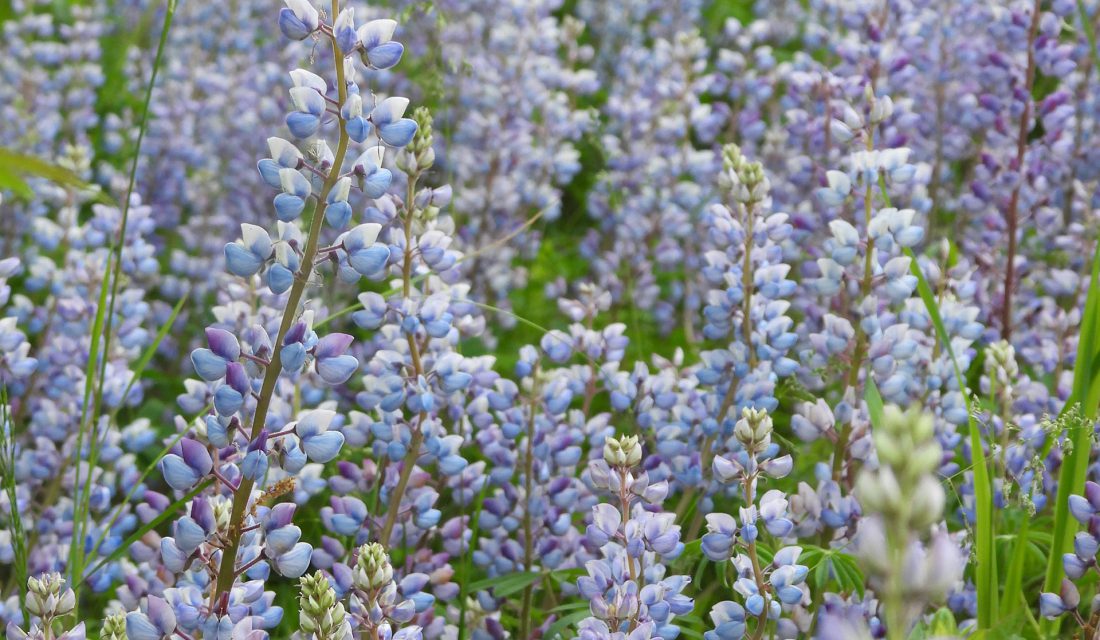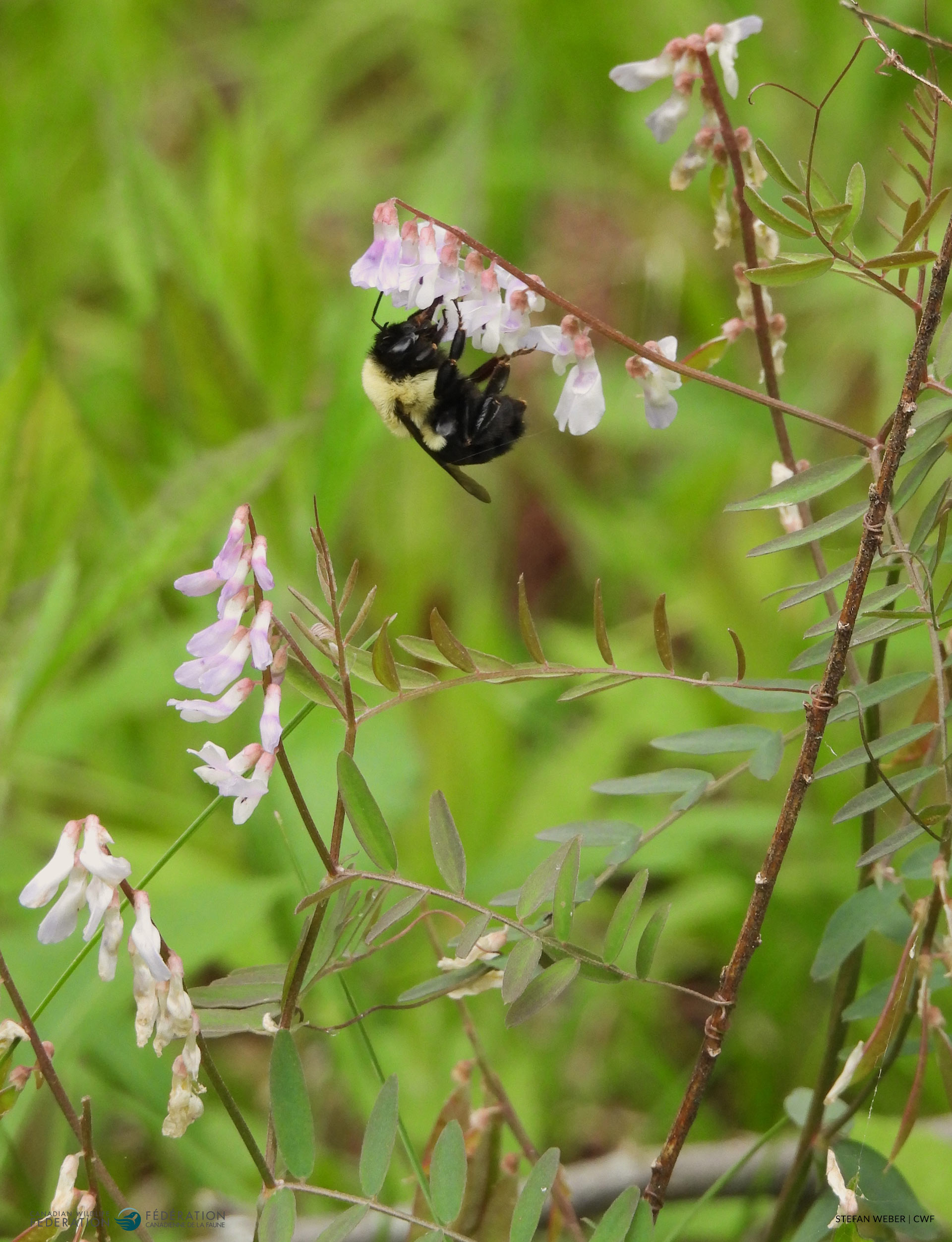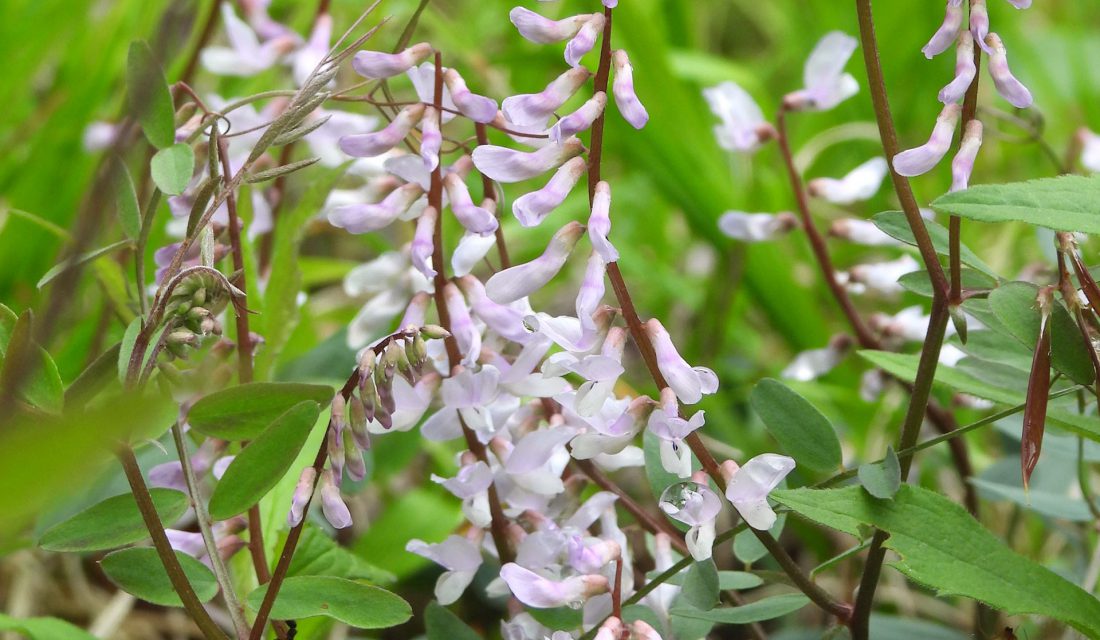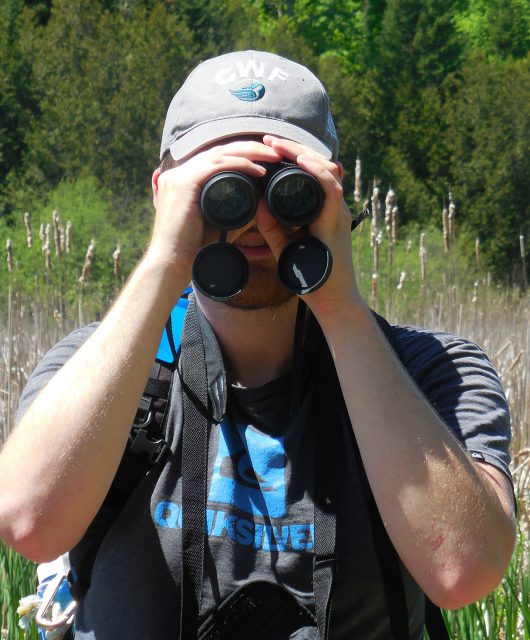Oak Savannah ecosystems of southern Ontario are home to some very rare and unique plant species including Sundial Lupine and Carolina Wood-Vetch.
Both of these spring wildflowers are members of the Legume family, related to beans and peas. The Legume family is the fourth most biodiverse plant family in the world, following grasses, orchids, and the sunflower family. In southern Ontario alone there are 37 species of native plants in the legume family, and all are very important in their respective ecosystems because they can capture atmospheric nitrogen and improve soil fertility and benefit surrounding plants. Legumes also support specialist native bees.

While the Sundial Lupine has been successfully restored in several areas across its range in Canada, the Carolina Wood-Vetch is not faring as well. With only a handful of very small populations scattered across the landscape, this species suffers from low genetic diversity and recruitment of new seedlings, largely due to competition with invasive plants and increasingly frequent spring drought. Unfortunately, this species is not legally protected and not the subject of any official recovery strategy as are most rare species designated at-risk.
Working to Recover the At-risk Wood Vetch

As part of a grass-roots effort to conserve this species, I have been monitoring populations, and carefully collecting small amounts of seed to propagate this species under ideal conditions. Legumes can be difficult to propagate; some species need specific bacteria in the soil to thrive, and very specific soil texture, moisture and pH.
Before attempting to propagate — or restore — this species, I wanted to better understand the habitats where it is currently flourishing. As its name suggests, the Carolina Wood Vetch is more common North and South Carolina, becoming less frequent as it ranges north. So, this spring I set off to New York State to see if I could find larger, healthier populations of wood vetch growing in habitats more representative of what is ideal for them.
In New York, this species is found only on the tops of mountains within the Appalachian plateau. It can be found in dry woodland openings near Oak and Pine, but also is growing from a mossy biocrust with species associated in Ontario with Prairie-alvar communities, like Lowbush Blueberry, Grey Goldenrod, Columbine and Pussy-Toes. The New York Populations were less shaded than those in Ontario and were growing in areas with more moss and forb cover, and less accumulated leaf-litter. Though some plants were growing in open parts of the forest without a shrub layer, the largest plants were climbing shrubs at the edge of the forest.

There are several exotic, weedy species of Vetch in Canada that resemble Carolina Wood Vetch, but don’t confuse them! Wood Vetch blooms in spring, typically before any of the exotic vetch species do, around May 15 in Southern Ontario. The flowers are a pale lilac colour, not deep purple or magenta like weedy vetch. The stems are hairless and tinged with red in spring. Once the flowers fade, and other understory plants flush out fully, Wood Vetch becomes nearly invisible, making it hard to monitor. There is a similarly narrow window of opportunity to collect seeds. Its little pea-like pods will ripen before July, dry, crack and spiral open, flinging seeds several metres in all directions.
I look forward to using the knowledge I gathered in New York to attempt to propagate this rare legume! Of course, there are written protocols available online to help as well, but there’s nothing quite like learning in place from the plants perspective — feeling the soil, noting companion species, and the orientation of flowers.
Helping Native Plants in Your Garden

There are other native legumes that support wildlife and are much easier to grow from seed in your garden. These include Bushclovers (Lespedeza capitata), Showy Trefoil (Desmodium canadense) and Trailing Wild Bean (Strophostyles helvola). Native plants are so critical to conserve as they help filter water, improve soil fertility, and provide shade, all while supporting pollinators and other beneficial insects. By growing regionally native plants you can help support your local and migratory wildlife. Use our quick or detailed search to find plants native to your province that match the growing conditions of your garden, by checking out CWF’s Native Plant Encyclopedia





